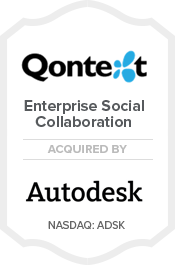I am going to write a 3 part series on mentorship and technology startups. Rather than write about why you need a mentor or how to engage with a mentor (next series) I thought the first step for most entrepreneurs would be to seek out great mentors.
As an additional bonus, I thought I’d list some good mentors in India so there’s a starting point (not comprehensive). Please feel free to add people who deserve to be on this list via comments (you cannot add yourself, someone has to recommend you, preferably 2 people).
We will focus primarily on technology startup mentors, which are < 2 years old. I believe there are 3 types of mentors you need at this stage: Technology, Marketing & Industry specific ones – that’s it. Everyone else is a nice to have waste of time.
Why?
Early in your startup, you should be focused on solving a problem and building your product, while at the same time, talking to customers and understanding their pain points. So if you are spending time doing anything else, its a waste. Mentors should help you do these things alone.
So, if you are thinking of getting that CEO of a 3-4 year old company which is doing well, as a mentor, he should fit in one of these buckets, else he a) does not have enough time to give you or b) does not have enough practical knowledge to share.
This post is about technology mentors. The next two posts are on marketing and industry mentors.
Technology mentors should help you think about the solution architecture, build & recruit a great engineering team and understand how to solve complex engineering problems.
I define technology mentors as people who are engineering managers, UX designers, architects & hands-on senior technical staff members in their day jobs. No one else qualifies. I would not put ex-engineering manager (now consultants at large, etc.) on this list. The reason is simple:
If you are not practicing, in the trenches, you don’t know the specifics and tend to give “Gyan” at a high level.
ps. US folks, I am trying to introduce some cool Indian lingo into your vocabulary, so please click on that Wikipedia link about gyan. 
So how do you look for a great technology mentor?
1. Social proof – GitHub, Hacker News, Hackerstreet.in, HackerRank and Stack Overflow are great places to start. Also seek out folks at offline events such as Startup Weekend, Yahoo Hack Day and other such developer events. Dont look for technology mentors at generic industry or startup events. You dont find good technology mentors there.
2. Look at some awesome product companies – Cleartrip, Flipkart, Komli Media, Yahoo, Google (Map Maker), Microsoft Surface, InMobi, Facebook, etc. Get to know who runs their engineering and technology teams. Find out who their good senior, hands-on, architects and engineering managers are.
3. Reach out through your technical network: E.g. I am trying to solve this complex engineering problem, and we have a few areas where we’re stuck and would love some help. Can you please recommend someone who is a <machine learning expert> who is working on this area at <company name>?
Most good technology mentors I know like to work on really hard engineering problems, so the harder & more unique your problem the more likely you are going to attract a great mentor. Its a self selecting list (which is good) so if someone believes the problem you are trying to solve is not in their interest area, you dont want them anyway.
So now, on to a short list (soon to get long thanks to you all).
<EM> This list is biased right now. These are people I know, like and admire. Please feel free to help other entrepreneurs by recommending good people I dont know to this list. </EM>
Some recommended Engineering manager mentors:
1. Sachin Desai (Ericsson)
2. Mekin Maheshwari (Flipkart)
3. Hari Shankaran (Interview Street)
4. Jayanth Vijayaraghavan (Yahoo)
4. Indus Khaitan (Bitzer)
5. Bharat Vijay (ex Yahoo, Amazon)
6. Amod Malviya (Flipkart)
7. Srinivasan Seshadri (ex Kosmix)
Some recommended Architect / CTO mentors:
1. Dorai Thodla (iMorph)
2. Prateek Dayal (Support Bee)
3. Shivkumar Ganesan (Exotel)
4. Avlesh Singh (Webengage)
Some recommended Cloud (AWS, Google App Engine, Azure):
1. Ravi Pratap (MobStac)
2. Perrraju Bendapudi (Microsoft)
Some recommended design mentors:
1. Sunit Singh (Cleartrip)






